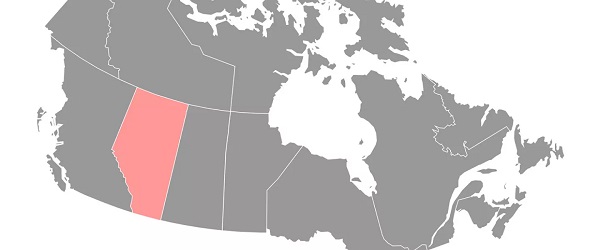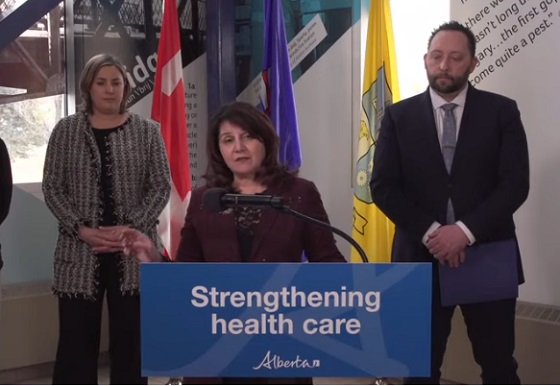Alberta
Alberta Blue Cross shares essential summer safety tips

Alberta Blue Cross shares essential summer safety tips
Plan ahead to be prepared for any situation this summer.
COVID-19 has impacted summer vacation plans for many Albertans, but the pandemic has not stopped the arrival of summer. While large social gatherings and events like festivals and outdoor concerts aren’t permitted this summer, the opportunity to spend time outdoors and travel within Alberta, responsibly, are still possible.
As a partner in Alberta’s preventable injury campaign and an organization committed to health promotion, Alberta Blue Cross® encourages Albertans to have a safe and active summer.
- Practice sun safety.
Avoid sunburns by using a broad-spectrum sunscreen with a Sun Protection Factor (SPF) of at least SPF 30. Generously apply it 20 minutes before going outside and reapply frequently. Don’t forget about your face and eyes—protect them by wearing a hat and sunglasses with an ultraviolet (UV) A/B certified seal. With kids being more sensitive to sunlight, it’s even more important they’re protected when outside for even short periods.
- Stay cool and hydrated.
Sunshine and high temperatures increase your risk of sunstroke and heat exhaustion—both can be life-threatening for infants, young children and seniors. To avoid this, stay hydrated by drinking lots of water and other non-alcoholic, non-caffeinated drinks. Increase your vitamin C intake—it provides a natural defense against heat stroke, exhaustion and heat rash. Make sure to stay cool by wearing light-coloured clothing and seeking shade often. Never leave children or pets inside a parked vehicle.
- Be safe in and on the water.
No one plans to drown, but dozens of individuals die in water-related accidents each year in Alberta. According to the 2019 Alberta Drowning Report, 220 people drowned in Alberta from 2012 to 2016, with males aged 20 to 34 years as the most common victims of drowning-related deaths. Most drownings occur in lakes, ponds and rivers—even as a good swimmer, you’re at risk of drowning if you fall out of a boat or are in an accident. When visiting bodies of water, make sure you and your family are equipped with life jackets that are properly fitted to each individual and approved by Transport Canada. Children can drown in as little as one inch of water, so never leave them unsupervised in or near water.
- Avoid pesky bug bites.
While the risk of getting a serious disease from a bug bite in Alberta is low, it’s important to be aware of the risks and how you can prevent them. Cover up with light-coloured clothing, which is less attractive to mosquitoes and allows you to see ticks easily. Wear insect repellent but apply sunscreen first. After being outside, check yourself, your children and pets for any ticks or bug bites. If you find a bug bite, follow proper instructions on how to treat it quickly to reduce the chance of infection or disease. You can find treatment instructions on MyHealth.Alberta.ca or by calling Health Link at 811.
- Play safe.
Make sure that backyard and playground equipment is properly secured to the ground and teach children how to play safely. Be especially careful around recreational trampolines, which are an increasing cause of injuries among children—and ensure all trampolines contain a safety net enclosure and that any use is closely supervised. Always supervise children playing outdoors if they’re under the age of 12—be attentive and close enough to act if needed.
- Wear a helmet.
To protect yourself from injury, it’s important to wear a helmet when on a bicycle, skateboard, scooter, rollerblades or when operating a motorized off-road vehicle. Alberta laws require helmets be worn by anyone operating a motorcycle or an off-highway vehicle—for example, an all-terrain vehicle (ATV). Albertans under the age of 18 are also required to wear a helmet when cycling. Make sure your helmet fits properly—it should be snug, level front-to-back, sit an inch above your eyebrows and allow for two fingers to fit between your chin and the strap.
- Camp safely.
Plan to be prepared for any situation when camping. Bring a map of the area and make sure someone is aware of where you’re headed—especially if there’s no cellphone service. Bring clothing for all types of weather and always pack an emergency kit with a flashlight, a radio, extra batteries and medical supplies. Avoid attracting bears to your campsite by keeping food, garbage and recyclables inside a vehicle, hard-sided trailer or bear-proof container. In the event of severe weather, seek shelter in a building or metal-roofed vehicle—never stay in your tent. Prior to your trip, be sure to check the Alberta Parks website for the most up-to-date information on camping regulations.
- Keep food fresh.
Prepare and handle foods safely to reduce the risk of food-borne illness—especially when barbequing or going outdoors. Wash your hands thoroughly before and after handling food. Use hand sanitizer if you’re camping or on a picnic. Keep food between 4 and 6°C to prevent growth of harmful bacteria. Discard any cooked food that has been at room temperature for more than two hours. When in doubt, throw it out!
- Protect your home.
Follow some of these simple tips to decrease the possibility of someone breaking into your home while you’re away on vacation—even short ones. If you’re going to mention your trip on social media, make sure your profile and status updates are set to private. While away, avoid geotagging pictures or adding the location to public status and story updates. Have friends or neighbours check in on your home to bring in mail and packages or identify any leaks or hazards that could become bigger problems. As a bonus, their visits will make potential criminals think your house is occupied.
- Keep an eye on the sky.
As you know, summer weather conditions in Alberta can change fast. Severe weather like heavy winds, hailstorms or tornadoes can be life-threatening. Before you head out, be sure to check the weather forecast. While outside, keep an eye on the sky, keep a radio or your mobile phone nearby to be aware of any weather advisories, and have a plan to find shelter should a storm arise.
2025 Federal Election
Next federal government should recognize Alberta’s important role in the federation

From the Fraser Institute
By Tegan Hill
With the tariff war continuing and the federal election underway, Canadians should understand what the last federal government seemingly did not—a strong Alberta makes for a stronger Canada.
And yet, current federal policies disproportionately and negatively impact the province. The list includes Bill C-69 (which imposes complex, uncertain and onerous review requirements on major energy projects), Bill C-48 (which bans large oil tankers off British Columbia’s northern coast and limits access to Asian markets), an arbitrary cap on oil and gas emissions, numerous other “net-zero” targets, and so on.
Meanwhile, Albertans contribute significantly more to federal revenues and national programs than they receive back in spending on transfers and programs including the Canada Pension Plan (CPP) because Alberta has relatively high rates of employment, higher average incomes and a younger population.
For instance, since 1976 Alberta’s employment rate (the number of employed people as a share of the population 15 years of age and over) has averaged 67.4 per cent compared to 59.7 per cent in the rest of Canada, and annual market income (including employment and investment income) has exceeded that in the other provinces by $10,918 (on average).
As a result, Alberta’s total net contribution to federal finances (total federal taxes and payments paid by Albertans minus federal money spent or transferred to Albertans) was $244.6 billion from 2007 to 2022—more than five times as much as the net contribution from British Columbians or Ontarians. That’s a massive outsized contribution given Alberta’s population, which is smaller than B.C. and much smaller than Ontario.
Albertans’ net contribution to the CPP is particularly significant. From 1981 to 2022, Alberta workers contributed 14.4 per cent (on average) of total CPP payments paid to retirees in Canada while retirees in the province received only 10.0 per cent of the payments. Albertans made a cumulative net contribution to the CPP (the difference between total CPP contributions made by Albertans and CPP benefits paid to retirees in Alberta) of $53.6 billion over the period—approximately six times greater than the net contribution of B.C., the only other net contributing province to the CPP. Indeed, only two of the nine provinces that participate in the CPP contribute more in payroll taxes to the program than their residents receive back in benefits.
So what would happen if Alberta withdrew from the CPP?
For starters, the basic CPP contribution rate of 9.9 per cent (typically deducted from our paycheques) for Canadians outside Alberta (excluding Quebec) would have to increase for the program to remain sustainable. For a new standalone plan in Alberta, the rate would likely be lower, with estimates ranging from 5.85 per cent to 8.2 per cent. In other words, based on these estimates, if Alberta withdrew from the CPP, Alberta workers could receive the same retirement benefits but at a lower cost (i.e. lower payroll tax) than other Canadians while the payroll tax would have to increase for the rest of the country while the benefits remained the same.
Finally, despite any claims to the contrary, according to Statistics Canada, Alberta’s demographic advantage, which fuels its outsized contribution to the CPP, will only widen in the years ahead. Alberta will likely maintain relatively high employment rates and continue to welcome workers from across Canada and around the world. And considering Alberta recorded the highest average inflation-adjusted economic growth in Canada since 1981, with Albertans’ inflation-adjusted market income exceeding the average of the other provinces every year since 1971, Albertans will likely continue to pay an outsized portion for the CPP. Of course, the idea for Alberta to withdraw from the CPP and create its own provincial plan isn’t new. In 2001, several notable public figures, including Stephen Harper, wrote the famous Alberta “firewall” letter suggesting the province should take control of its future after being marginalized by the federal government.
The next federal government—whoever that may be—should understand Alberta’s crucial role in the federation. For a stronger Canada, especially during uncertain times, Ottawa should support a strong Alberta including its energy industry.
Alberta
Province announces plans for nine new ‘urgent care centres’ – redirecting 200,000 hospital visits

Expanding urgent care across Alberta
If passed, Budget 2025 includes $17 million in planning funds to support the development of urgent care facilities across the province.
As Alberta’s population grows, so does the demand for health care. In response, the government is making significant investments to ensure every Albertan has access to high-quality care close to home. Currently, more than 35 per cent of emergency department visits are for non-life-threatening conditions that could be treated at urgent care centres. By expanding these centres, Alberta’s government is enhancing the health care system and improving access to timely care.
If passed, Budget 2025 includes $15 million to support plans for eight new urgent care centres and an additional $2 million in planning funds for an integrated primary and urgent care facility in Airdrie. These investments will help redirect up to 200,000 lower-acuity emergency department visits annually, freeing up capacity for life-threatening cases, reducing wait times and improving access to care for Albertans.
“More people are choosing to call Alberta home, which is why we are taking action to build capacity across the health care system. Urgent care centres help bridge the gap between primary care and emergency departments, providing timely care for non-life-threatening conditions.”
“Our team at Infrastructure is fully committed to leading the important task of planning these eight new urgent care facilities across the province. Investments into facilities like these help strengthen our communities by alleviating strains on emergency departments and enhance access to care. I am looking forward to the important work ahead.”
The locations for the eight new urgent care centres were selected based on current and projected increases in demand for lower-acuity care at emergency departments. The new facilities will be in west Edmonton, south Edmonton, Westview (Stony Plain/Spruce Grove), east Calgary, Lethbridge, Medicine Hat, Cold Lake and Fort McMurray.
“Too many Albertans, especially those living in rural communities, are travelling significant distances to receive care. Advancing plans for new urgent care centres will build capacity across the health care system.”
“Additional urgent care centres across Alberta will give Albertans more options for accessing the right level of care when it’s needed. This is a necessary and substantial investment that will eventually ease some of the pressures on our emergency departments.”
The remaining $2 million will support planning for One Health Airdrie’s integrated primary and urgent care facility. The operating model, approved last fall, will see One Health Airdrie as the primary care operator, while urgent care services will be publicly funded and operated by a provider selected through a competitive process.
“Our new Airdrie facility, offering integrated primary and urgent care, will provide same-day access to approximately 30,000 primary care patients and increase urgent care capacity by around 200 per cent, benefiting the entire community and surrounding areas. We are very excited.”
Alberta’s government will continue to make smart, strategic investments in health facilities to support the delivery of publicly funded health programs and services to ensure Albertans have access to the care they need, when and where they need it.
Budget 2025 is meeting the challenge faced by Alberta with continued investments in education and health, lower taxes for families and a focus on the economy.
Quick facts
- The $2 million in planning funds for One Health Airdrie are part of a total $24-million investment to advance planning on several health capital initiatives across the province through Budget 2025.
- Alberta’s population is growing, and visits to emergency departments are projected to increase by 27 per cent by 2038.
- Last year, Alberta’s government provided $8.4 million for renovations to the existing Airdrie Community Health Centre.
Related information
-

 2025 Federal Election24 hours ago
2025 Federal Election24 hours ago2025 Federal Election Interference from China! Carney Pressed to Remove Liberal MP Over CCP Bounty Remark
-

 Uncategorized23 hours ago
Uncategorized23 hours agoPoilievre on 2025 Election Interference – Carney sill hasn’t fired Liberal MP in Chinese election interference scandal
-

 Business2 days ago
Business2 days agoTariff-driven increase of U.S. manufacturing investment would face dearth of workers
-

 Business1 day ago
Business1 day agoCuba has lost 24% of it’s population to emigration in the last 4 years
-

 Media1 day ago
Media1 day agoTop Five Huge Stories the Media Buried This Week
-

 2025 Federal Election23 hours ago
2025 Federal Election23 hours ago2025 Election Interference – CCP Bounty on Conservative Candidate – Carney Says Nothing
-

 Censorship Industrial Complex19 hours ago
Censorship Industrial Complex19 hours agoWelcome to Britain, Where Critical WhatsApp Messages Are a Police Matter
-

 Education2 days ago
Education2 days agoOur Kids Are Struggling To Read. Phonics Is The Easy Fix









